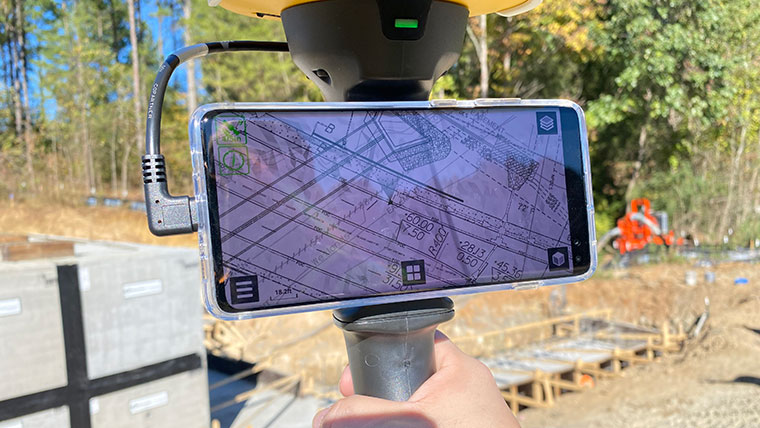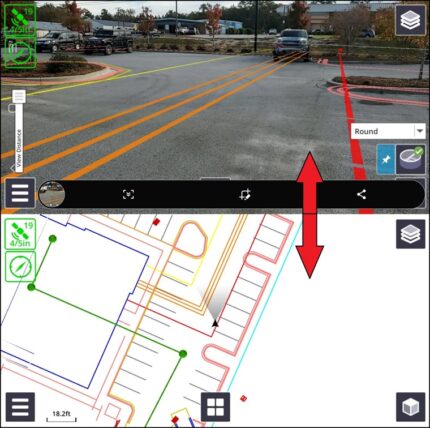
Early adoption of Augmented Reality (AR) technology
Matt Watson demonstrating AR tech at Galleria Blvd. Extension project in Rock Hill, SC
Any new technology can be intimidating to implement—especially when the industry it affects has yet to fully integrate it as a new “normal.” Early adoption of new technology is undeniably challenging, but seeing real benefits at the early stages of implementation can make up for the headaches that come with learning something new.
Augmented Reality (AR) technology, which has much to offer to users willing to adopt it, is not without its challenges. AR technology allows a user to visualize a computer-generated image that is superimposed onto a user’s view of the real world, such as through a smartphone camera or virtual reality headset viewport. This technology is recognized as a significant emerging technology within the engineering industry, and is considered to be an unparalleled means of project collaboration and coordination.
The technology itself is relatively simple to implement; however the successful utilization of all its capabilities depends heavily on the data that you input to use it. You need a 3D model with sufficient detail ready to go for visualization. That means extra work. Project budgets may not yet account for creating that level of detail, or the normal workflow for projects may not include taking extra steps to produce the information needed for successful AR technology implementation.
This may be a hurdle that disincentivizes potential users from adopting this technology. This is especially so when government agencies already have efficient standards and typical workflow procedures for development of 2D engineered plans that do not yet fully streamline 3D model integration into AR technology. It would be tempting to think that, until everything we design is a 3D model, there is no point in embracing AR technology at this time.
This does not mean that the more commonly available 2D information we have isn’t without value within AR technology. The experience of walking a project site with visualized 2D plan sheets draped onto the project surface to scale and in real time can sometimes paint a better picture to a project stakeholder than a paper-and-ink plan sheet. Utility coordination and property line information becomes much more intuitive, as lines on paper become easier to visualize on site through a screen than on a plan sheet. This is especially so with gas lines, telecommunication lines, or underground electrical lines that may not always have reliable 3D information available, such as elevations. AR technology capable of integrating geospatially correct information can tell a story visually on the spot, in a very quick and efficient manner, even with limited 2D information.

This is just one example of how there is value, even now, for early adoption of AR technology within the transportation and infrastructure industries. As an early adopter of AR technology for transportation projects, it has also been fun for me to watch contractors’ and project stakeholders’ reactions to visualizing proposed designs in a new way on project sites. Regardless of whether the information you have is 2D or 3D, there is a role even now for AR technology to fill while we await changes coming to the industry for engineers, architects, and designers and their projects.
The post Early adoption of Augmented Reality (AR) technology appeared first on Mead & Hunt.
This content was originally published here.


